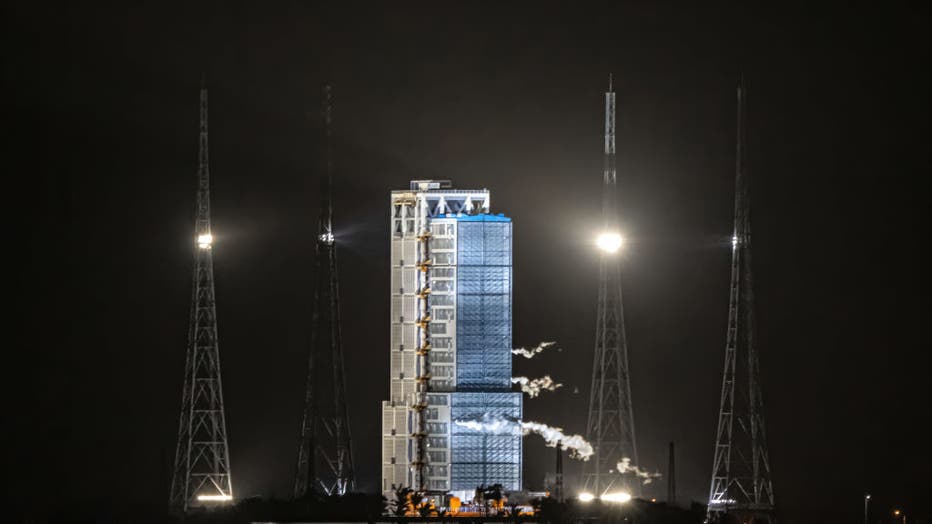China successfully lands spacecraft on moon to bring rocks back to Earth
BEIJING (AP) - A Chinese spacecraft landed on the moon to bring back lunar rocks to Earth for the first time since the 1970s, the government announced.
The China National Space Administration said Chang’e 5 “successfully landed” at its designated site shortly after 11 p.m. (1500 GMT) Tuesday after making a powered descent from its orbiter. It published images of the barren scene at the landing site, including where the lander's shadow can be seen.
The lander was launched Nov. 24 from the tropical southern island of Hainan. It is the latest venture by a Chinese space program that sent its first astronaut into orbit in 2003, has a spacecraft en route to Mars and aims eventually to land a human on the moon.
RELATED: China launches ambitious attempt to land rover on Mars

The fifth Long March-5 rocket, with China's new lunar probe Chang'e-5 on top, is ready to blast off from the Wenchang Space Launch Center on November 23, 2020 in Wenchang, Hainan Province of China.
Plans call for the lander to spend about two days drilling into the lunar surface and collecting 2 kilograms (4.4 pounds) of rocks and debris. The sample will be lifted up into orbit and transferred to a return capsule for the trip to Earth, setting down on the grasslands of Inner Mongolia around the middle of the month.
If it succeeds, it will be the first time scientists have obtained fresh samples of lunar rocks since a Soviet probe in the 1970s. Those samples are expected to be made available to scientists from other nations, although its unclear how much access NASA will have, given tight U.S. government restrictions on space cooperation with China.
From the rocks and debris, scientists hope to learn more about the moon, including its precise age, as well as increased knowledge about other bodies in our solar system. Collecting samples, including from asteroids, is an increasing focus of many space programs and China's mastery of the technology once again places it among the leading nations operating in space.
U.S. astronauts with NASA's Apollo space program brought back 842 pounds (382 kilograms) of lunar samples from 1969 to 1972, some of which is still being analyzed and experimented on.
The Chang'e 5 flight is China's third successful lunar landing. Its predecessor, Chang'e 4, was the first probe to land on the moon's little-explored far side. Chinese space program officials have said they envision future crewed missions along with robotic ones, including possibly building some sort of permanent space base for conducting research. No timeline or other details have been announced.
The latest flight includes collaboration with the European Space Agency, which is helping to monitor the mission.
China's space program has proceeded more cautiously than the U.S.-Soviet space race of the 1960s, which was marked by fatalities and launch failures.
In 2003, China became the third country to send an astronaut into orbit on its own after the Soviet Union and the United States. It also launched a crewed space station.
China, along with neighbors Japan and India, also has joined the growing race to explore Mars. The Tianwen 1 probe launched in July is on its way to the red planet carrying a lander and a rover to search for water.



